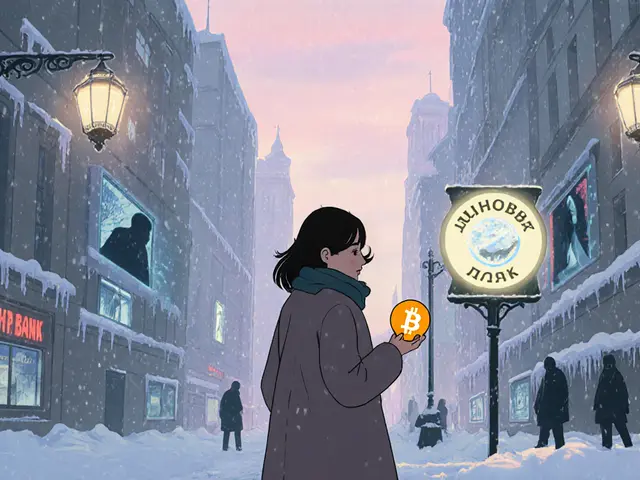Blockchain Network Value: What It Is, Why It Matters, and How It's Measured
When people talk about blockchain network value, the total economic worth generated by a blockchain’s users, transactions, and underlying token economy. Also known as on-chain value, it’s not the same as a coin’s price. A token can spike overnight, but if no one is using the network, that value is just noise. Real blockchain network value comes from people actually doing things on the chain—sending payments, locking up crypto for yield, trading tokens, or verifying data. It’s what keeps Bitcoin secure, what makes Ethereum the home of DeFi, and why some projects die quietly while others grow quietly.
Think of it like a highway. The number of cars on it doesn’t tell you everything. What matters is how often those cars move, how much cargo they carry, and whether the road stays open during storms. tokenomics, the economic design of a crypto token including supply, distribution, and incentives. Also known as crypto economics, it’s the rulebook that decides if users stick around or leave. If a blockchain gives out free tokens but doesn’t give users a reason to hold or use them, the network value collapses. That’s what happened to dozens of 2021 airdrop tokens—people claimed them, sold them, and walked away. Meanwhile, networks like Bitcoin and Ethereum keep growing because their tokenomics reward long-term participation, not short-term flips.
DeFi, a system of financial services built on blockchain without banks or middlemen. Also known as decentralized finance, it’s one of the biggest drivers of real network value today. When you lend crypto on Aave, stake on EigenLayer, or trade on Uniswap, you’re not just moving money—you’re adding security, liquidity, and trust to the network. Each transaction strengthens the chain. That’s why a blockchain with $10 billion locked in DeFi has more real value than one with a $100 billion market cap but no active users. The network isn’t just a ledger—it’s a living system. And like any system, it only works if people keep using it.
You’ll find posts here that dig into exactly this—how blockchain networks earn value, how scams pretend to have it, and why some projects survive while others vanish. Some look at how drug supply chains use blockchain to track medicine. Others show how courts treat crypto as property. You’ll see what happened to tokens like LUXO and PRIVIX when the network value faded, and how WINkLink and Bitgert tried to build real utility. This isn’t about hype. It’s about what actually moves the needle—and what doesn’t.
17
Cost of Sybil Attack vs Network Value: Why Blockchain Security Depends on Economics, Not Just Code
The cost of launching a Sybil attack on major blockchains like Bitcoin and Ethereum far exceeds the potential reward, making such attacks economically irrational. Smaller networks with low market caps remain vulnerable.
Latest Posts
Popular Posts
-
 What is LUXO (LUXO) crypto coin? The truth about the luxury authentication token
What is LUXO (LUXO) crypto coin? The truth about the luxury authentication token
-
 Crypto Mining-Friendly Countries Ranking 2025: Top Destinations for Legitimate Operations
Crypto Mining-Friendly Countries Ranking 2025: Top Destinations for Legitimate Operations
-
 Are Crypto Payments Allowed in Russia? What You Need to Know in 2025
Are Crypto Payments Allowed in Russia? What You Need to Know in 2025
-
 What is Infinite Money Glitch (IMG) Crypto Coin? The Risks, Tech, and Reality
What is Infinite Money Glitch (IMG) Crypto Coin? The Risks, Tech, and Reality
-
 What is Bitgert (BRISE) crypto coin? Full breakdown of the blockchain, tokenomics, and real-world performance
What is Bitgert (BRISE) crypto coin? Full breakdown of the blockchain, tokenomics, and real-world performance
Tags
- crypto exchange
- cryptocurrency
- blockchain
- crypto exchange review
- meme cryptocurrency
- cryptocurrency compliance
- Binance Smart Chain
- crypto airdrop 2025
- CoinMarketCap airdrop
- underground crypto Nepal
- crypto airdrop guide
- crypto staking
- Bitcoin mining Iran
- airdrop
- Ethereum staking
- GENIUS Act
- liquid staking
- cryptocurrency exchange security
- crypto
- crypto airdrop



